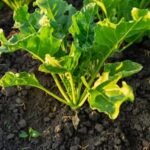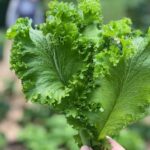Is wolmanized wood safe for vegetable gardens? This question has become increasingly important as more and more people turn to gardening in their own backyards. Wolmanized wood, also known as pressure-treated wood, is a popular choice for building raised beds and other structures in vegetable gardens. However, the safety of using this type of wood in close proximity to edible plants has come into question.
Before delving into the concerns and potential risks associated with wolmanized wood, it is essential to understand what this material is and why it is used in gardening. Additionally, the importance of using safe materials in vegetable gardens cannot be overstated, as the health and well-being of those consuming the produce grown in these gardens are directly impacted.
In this article, we will explore the wolmanizing process, discussing the types of chemicals used and any potential risks associated with the treatment. We will also address concerns about using wolmanized wood in vegetable gardens, including potential leaching of chemicals into the soil and its impact on plant health.
Furthermore, we will provide best practices for vegetable gardening with wolmanized wood and discuss alternative options for garden beds. By the end of this article, readers will have a clear understanding of whether or not wolmanized wood is safe for use in their vegetable gardens.
The Wolmanizing Process
The process of wood preservation, commonly known as wolmanizing, involves the treatment of lumber with preservatives to protect it from decay and insect damage. This treatment can extend the lifespan of wood, making it a popular choice for various outdoor construction projects, including garden beds. The most commonly used chemicals in the wolmanizing process are CCA (chromated copper arsenate), ACQ (alkaline copper quaternary), and CA-B (copper azole with a borate co-biocide).
CCA was frequently used in the past but has been phased out in many countries due to concerns about its potential health and environmental effects. It contained arsenic, a known carcinogen, which raised worries about possible leaching into the soil and water. In response to these concerns, alternatives such as ACQ and CA-B were developed and are now widely used as replacements for CCA.
The use of these chemical preservatives helps prevent rotting and termite damage in wood, extending its usable life for applications like garden beds. However, there have been ongoing debates regarding the safety of using these treated woods in vegetable gardens. Despite the transition away from CCA towards supposedly safer alternatives such as ACQ and CA-B, some experts still express caution about their potential impacts on soil and plant health.
| Wolmanizing Process Chemicals | Main Use |
|---|---|
| CCA (Chromated Copper Arsenate) | Phased out due to concerns about arsenic leaching into soil |
| ACQ (Alkaline Copper Quaternary) | Mainly used as an alternative to CCA in wood treatment |
| CA-B (Copper Azole with Borate Co-biocide) | An alternative to CCA with lower environmental impact |
Concerns About Wolmanized Wood in Vegetable Gardens
Potential Risks of Chemical Exposure
One of the primary concerns surrounding the use of wolmanized wood in vegetable gardens is the potential exposure to harmful chemicals. The treatment process often involves the use of preservatives such as chromated copper arsenate (CCA), which can leach into the soil over time. When these chemicals come into contact with edible plants, there is a risk that they may be absorbed by the roots and ultimately end up in the fruits and vegetables grown in the garden.
Leaching of Chemicals Into Soil and Plants
Another issue associated with wolmanized wood is the leaching of chemicals into the soil. Over time, rainfall and irrigation can cause these chemicals to seep out of the treated wood and contaminate the surrounding soil. This raises concerns about the potential uptake of these contaminants by vegetable plants, posing risks to both plant health and human consumption.
Potential Health Impacts
The presence of chemical preservatives in wolmanized wood also raises potential health impacts for gardeners and their families. Direct contact with CCA-treated wood or inhaling sawdust from this material can result in exposure to toxic substances. Additionally, consuming produce grown in soil contaminated by these chemicals could lead to adverse health effects. As a result, it is essential to carefully consider the use of wolmanized wood in vegetable gardens and take necessary precautions to minimize potential risks.
The Impact on Soil and Plants
When wolmanized wood is used in vegetable gardens, it can have a significant impact on the health of the soil and the plants growing in it. One of the primary concerns is the potential leaching of chemicals from the treated wood into the soil. This leaching can have negative effects on the microorganisms present in the soil, as well as on the overall nutrient balance essential for healthy plant growth.
Research has shown that certain chemicals used in the wolmanizing process can indeed leach into the surrounding soil. Copper, chromium, and arsenic are among the common chemicals used in wood preservatives, and their presence in the soil can lead to toxicity for plants. This toxicity can manifest in stunted growth, yellowing leaves, and ultimately a decrease in yield for vegetable plants.
To mitigate the impact of wolmanized wood on soil and plants, it is essential to monitor any signs of chemical leaching and implement measures to protect the garden environment. Additionally, regular testing of soil pH and nutrient levels can help determine if any imbalances have resulted from the use of treated wood. Taking these steps can help ensure that vegetable gardens remain healthy and productive despite using wolmanized wood for construction.
| Chemical | Potential Impact on Plants |
|---|---|
| Copper | Stunted growth, yellowing leaves |
| Chromium | Decrease in yield for vegetable plants |
| Arsenic | Toxicity for plants leading to decreased yield> |
Best Practices for Vegetable Gardening With Wolmanized Wood
When using wolmanized wood in vegetable gardens, it’s important to take certain precautions to minimize any potential risks associated with the treated wood. Here are some best practices for vegetable gardening with wolmanized wood:
- Use a barrier: To prevent direct contact between the wolmanized wood and the soil or plants, consider using a barrier such as heavy-duty plastic or pond liner. This can help reduce the risk of chemicals leaching into the soil.
- Choose appropriate plants: Some gardeners choose to only plant ornamental flowers or non-edible plants in beds made with wolmanized wood to avoid any potential health risks from consuming produce grown in close proximity to treated wood.
- Maintain good hygiene: When working with wolmanized wood, be sure to wash your hands thoroughly after handling the material, particularly before handling any food crops.
It’s also essential to be mindful of using appropriate safety gear when handling and cutting treated wood, such as wearing gloves and a mask to prevent inhalation of sawdust containing preservative chemicals.
While these best practices can help minimize potential risks associated with wolmanized wood, some gardeners may still prefer alternative options for building their vegetable garden beds. In the next section, we will explore some alternative materials and options for constructing garden beds, along with their benefits and drawbacks.
Regulations and Recommendations
Government Regulations
In many countries, the use of wolmanized wood in vegetable gardens is regulated to ensure the safety of consumers. Governmental agencies often have guidelines and restrictions in place regarding the use of treated wood in close proximity to edible plants. These regulations typically dictate the type of preservatives that can be used, as well as how the treated wood should be labeled and handled.
Recommendations From Gardening Organizations
Gardening and agricultural organizations also provide recommendations for using wolmanized wood in vegetable gardens. These recommendations often include advice on choosing specific types of treated wood that are deemed safer for use around food crops. Additionally, these organizations may offer guidance on best practices for mitigating any potential risks associated with using treated wood, such as using a barrier between the wood and the soil.
Summary and Considerations
When considering whether to use wolmanized wood in vegetable gardens, it is essential to be aware of both governmental regulations and recommendations from gardening organizations. By following these guidelines, gardeners can make educated decisions about the materials they use while prioritizing the safety of their edible plants. It is also important to stay informed about any updates or changes in regulations and recommendations related to using treated wood in vegetable gardens.
Alternative Options for Vegetable Garden Beds
There are several alternative options for building vegetable garden beds that can be considered if there are concerns about using wolmanized wood. Here are some alternatives to consider:
- Cedar: Cedar is a popular choice for garden bed construction as it is naturally resistant to rot, decay, and insect damage. It is a durable and long-lasting option for creating raised beds.
- Composite lumber: Made from a combination of wood fibers and plastic, composite lumber offers the look and feel of real wood without the maintenance. It is resistant to rot, fading, and insects, making it a low-maintenance option for garden bed construction.
- Recycled plastic: Using recycled plastic to build garden beds is an environmentally friendly option. It is durable, long-lasting, and won’t rot or leach chemicals into the soil. Plus, using recycled materials aligns with sustainable gardening practices.
When considering alternative options for vegetable garden beds, it’s important to weigh the benefits and drawbacks of each material. Factors such as cost, durability, environmental impact, and maintenance should all be taken into account when making a decision.
By exploring these alternative options, individuals can make an informed decision about the materials they use in their vegetable gardens while ensuring the safety of their plants and the environment.
Conclusion
In conclusion, the use of wolmanized wood in vegetable gardens raises valid concerns about the potential risks associated with the chemicals used in the treatment process. While the wolmanizing process effectively protects wood from decay and extends its lifespan, there is a risk of chemical leaching into the soil and potentially affecting the health of edible plants.
Additionally, research on the impact of treated wood on soil quality and plant growth emphasizes the need for careful consideration when using wolmanized wood in close proximity to vegetable crops.
Ultimately, it is important for gardeners to prioritize safety and make informed decisions about the materials they use in their vegetable gardens. While governmental regulations may exist regarding the use of treated wood in gardening, it is essential for individuals to take personal responsibility for understanding and mitigating any potential risks.
This may include following best practices for using wolmanized wood in vegetable gardens, such as creating a barrier between the treated wood and the soil or exploring alternative options for garden bed construction.
In light of these considerations, while wolmanized wood can be used in vegetable gardens with caution and proper preventive measures, it’s clear that there are alternative options available. Gardeners can explore various materials such as naturally rot-resistant woods, concrete blocks, or composite lumber as safer alternatives that minimize potential risks.
Ultimately, by carefully weighing the pros and cons of using wolmanized wood and considering alternative options, gardeners can create safe and healthy environments for their vegetable plants to thrive.
Frequently Asked Questions
Is It OK to Use Pressure Treated Wood in a Vegetable Garden?
Using pressure treated wood in a vegetable garden is a controversial topic. While pressure treated wood is resistant to rot and decay, it also contains chemicals like arsenic that can be harmful if they leach into the soil.
Many experts recommend avoiding the use of pressure treated wood in raised beds where vegetables are grown, especially if the vegetables will directly contact the wood.
Is Pressure Treated Wood Toxic to Soil?
Pressure treated wood contains chemicals such as arsenic, copper, and chromium that can be toxic to the soil. Over time, these chemicals can leach out of the wood and into the surrounding soil, potentially contaminating it.
This can be a concern for vegetable gardens where crops may absorb these chemicals from the soil. As a result, many gardeners opt for untreated or naturally rot-resistant woods in their gardens instead.
What Wood Should Not Be Used in a Raised Garden Bed?
Certain types of wood shouldn’t be used in raised garden beds due to their potential toxicity or quick deterioration. For example, woods treated with creosote or pentachlorophenol should be avoided as they can release harmful chemicals into the soil over time.
Additionally, softwoods like cedar and redwood that are not naturally rot-resistant may break down more quickly if used in raised garden beds without proper treatment. Instead, it’s best to opt for untreated hardwoods like oak or black locust when building raised garden beds to avoid any potential issues with toxicity or durability.

If you’re looking to get into vegetable gardening, or are just looking for some tips on how to make your current garden better, then you’ve come to the right place! My name is Ethel and I have been gardening for years. In this blog, I’m going to share with you some of my best tips on how to create a successful vegetable garden.





